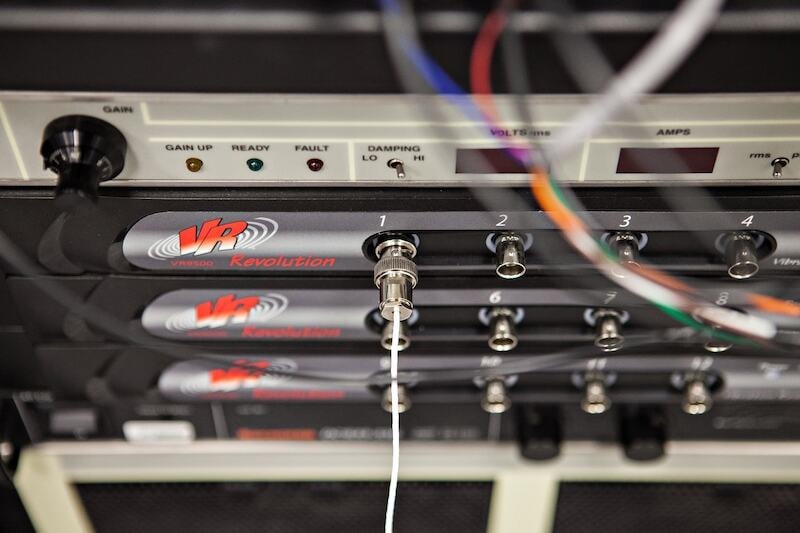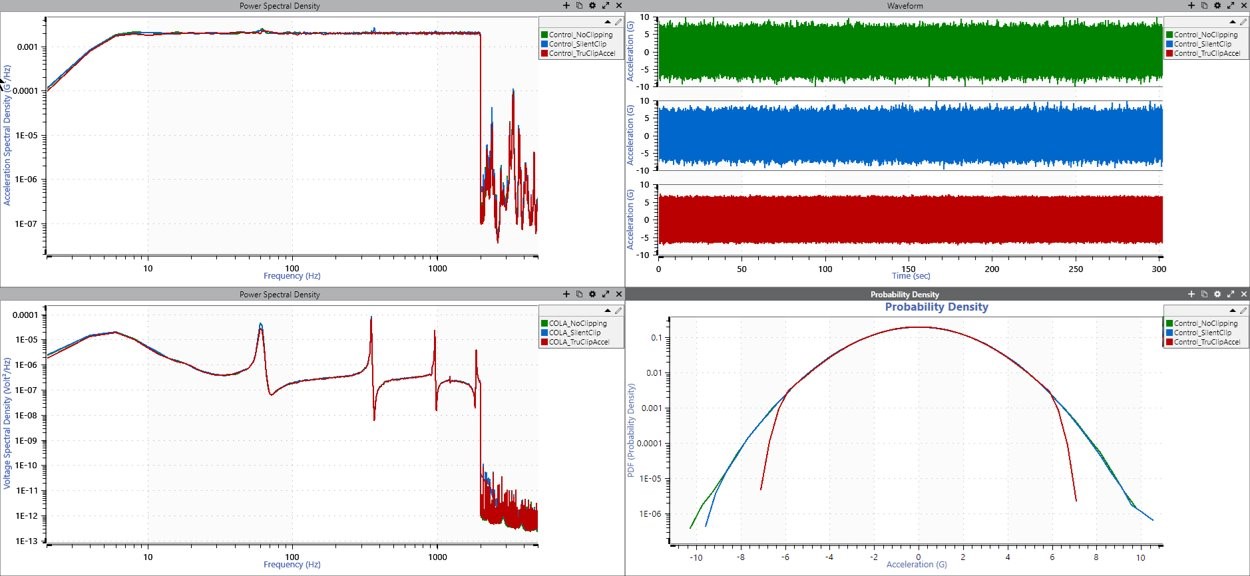An automotive customer ran a new random vibration test several times, and the tests all aborted within a similar timeframe. The issue related to the system limits, as the customer needed to reset the amplifier after each test abort.
Shaker systems have a limit on the acceleration levels they can perform without damage. It typically depends on the physical characteristics of the shaker/armature and the voltage/current capabilities of the amplifier.
An amplifier may stop output/turn off for several reasons, including:
 Overload protection: If the drive signal exceeds the amplifier’s maximum rated voltage or current, the amplifier may shut off to prevent overheating or damage.
Overload protection: If the drive signal exceeds the amplifier’s maximum rated voltage or current, the amplifier may shut off to prevent overheating or damage.- Power supply issues: Fluctuations or interruptions in the power supply due to power surges, brownouts, or electrical faults can prompt the amplifier to shut off.
- Faulty components: Component failures due to manufacturing defects, wear, or electrical stress can cause unexpected shutdowns.
In this case, the test acceleration exceeded the current capabilities, tripping the amplifier. The customer needed to check their system limits and then remove mass from the shaker or use an amplifier with higher ratings.
TruClip Acceleration
Alternatively, the customer could apply acceleration clipping with the TruClip™ software feature. TruClip uses closed-loop vibration control to limit motion on the shaker table. Clipping the peak acceleration could reduce the current needed from the amplifier, allowing the customer to run the test.

Comparison of acceleration data with no clipping (green), silent clipping (blue), and TruClip (red).
Featured Software
